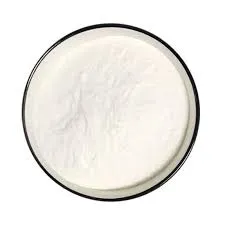
Nov . 11, 2024 20:25 Back to list
building coating adhesive hpmc
Building Coating Adhesive The Role of Hydroxypropyl Methylcellulose (HPMC)
In the realm of construction and building materials, adhesives play a critical role in ensuring the durability, strength, and longevity of various structures. One notable component that has gained traction in this domain is Hydroxypropyl Methylcellulose (HPMC), a versatile cellulose ether widely used in building coating adhesives. This article delves into the significance of HPMC in building coatings, its properties, applications, and advantages.
What is Hydroxypropyl Methylcellulose?
Hydroxypropyl Methylcellulose is a non-ionic cellulose ether derived from natural cellulose. Its semi-synthetic nature provides it with a unique combination of properties that make it particularly suitable for use in construction materials. HPMC is often utilized due to its excellent water retention capabilities, thermal stability, and binding properties. These attributes not only enhance the performance of adhesives but also contribute positively to the overall quality of building coatings.
Properties of HPMC
1. Water Retention One of the standout features of HPMC is its ability to retain moisture. This property is crucial in building coating applications, as it extends the working time of adhesive by preventing premature drying. This ensures that the coated surface maintains adequate adhesion, ultimately improving the bonding strength.
2. Viscosity Control HPMC can be tailored to achieve the desired viscosity, making it easier to modify the flow characteristics of adhesives. This flexibility is essential for contractors and builders as it allows for the formulation of coatings that can be easily applied in various conditions.
3. Film-Forming Abilities HPMC forms a continuous film upon drying, providing excellent protection to the surface beneath. This film not only enhances the aesthetic appeal but also protects the substrate from environmental factors such as moisture, UV radiation, and pollutants.
4. Compatibility HPMC is compatible with a wide range of other materials, allowing formulators to create multi-functional adhesives that meet specific performance criteria. Its compatibility with various fillers, pigments, and other additives enhances the versatility of building coatings.
Applications in Building Coatings
Building coating adhesives that incorporate HPMC are widely used in various applications, including
building coating adhesive hpmc

1. Tile Adhesives HPMC is a key ingredient in tile adhesives, providing enhanced water resistance and improved adhesion to various substrates. This is particularly important in wet areas such as bathrooms and kitchens.
2. Renderings and Plasters In external and internal plasters, HPMC contributes to improved workability, water retention, and adherence. This ensures that renderings remain intact and durable over time, even under harsh weather conditions.
3. Mortars Modified mortars containing HPMC are used for both structural and aesthetic purposes. The addition of HPMC not only improves the mortar's adhesive properties but also enhances its flexibility and resistance to cracking.
4. Interior Wall Coatings HPMC is often included in formulations for interior paints and coatings, providing creamy texture and ease of application while preventing sagging.
Advantages of Using HPMC in Building Coating Adhesives
The incorporation of HPMC in building coating adhesives offers numerous advantages, making it a preferred choice among manufacturers
- Enhanced Performance HPMC improves the overall performance of adhesives, making them stronger and more effective in bonding various materials. - Eco-Friendly Option As a naturally derived ingredient, HPMC is considered a more environmentally friendly option compared to some synthetic additives.
- Cost-Effectiveness Despite its advanced properties, HPMC can be produced at competitive prices, making it accessible for a wide range of applications.
- Improved User Experience Its excellent workability and long open time enhance the user experience for contractors, enabling smoother application processes and better end results.
Conclusion
Hydroxypropyl Methylcellulose (HPMC) is undoubtedly a game-changer in the field of building coating adhesives. Its unique properties facilitate a myriad of applications, enhancing performance and ensuring durability. As the construction industry continues to evolve, the role of HPMC will likely become even more pronounced, contributing to innovative and sustainable building practices. By leveraging the benefits of HPMC, builders and contractors can significantly improve the quality and longevity of their projects, ensuring a solid foundation for the future.
-
Versatile Hpmc Uses in Different Industries
NewsJun.19,2025
-
Redispersible Powder's Role in Enhancing Durability of Construction Products
NewsJun.19,2025
-
Hydroxyethyl Cellulose Applications Driving Green Industrial Processes
NewsJun.19,2025
-
Exploring Different Redispersible Polymer Powder
NewsJun.19,2025
-
Choosing the Right Mortar Bonding Agent
NewsJun.19,2025
-
Applications and Significance of China Hpmc in Modern Industries
NewsJun.19,2025







